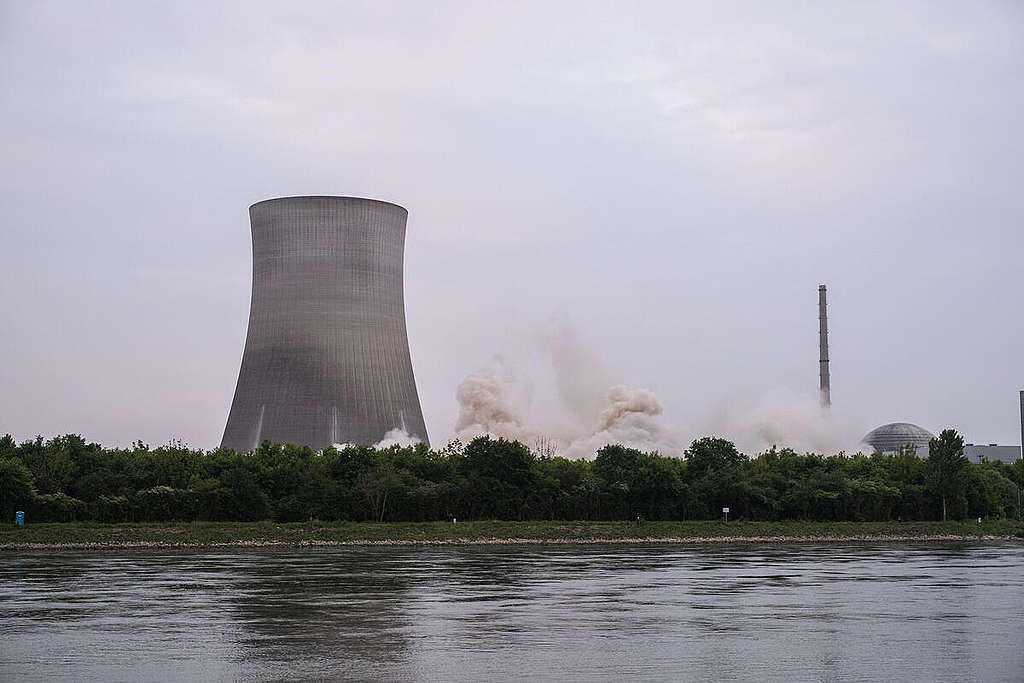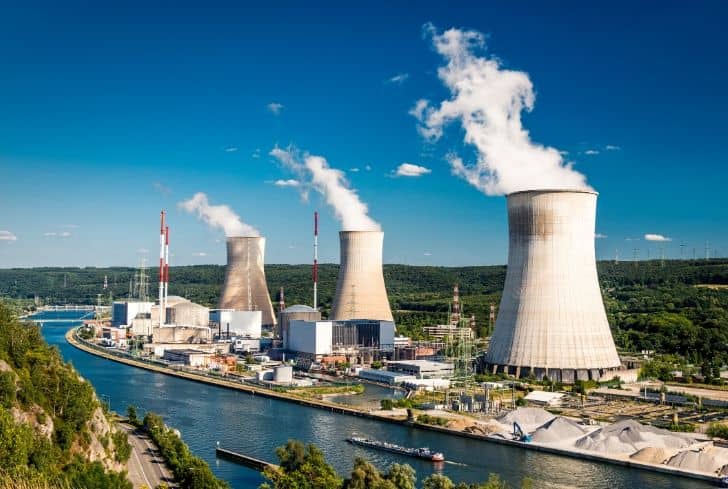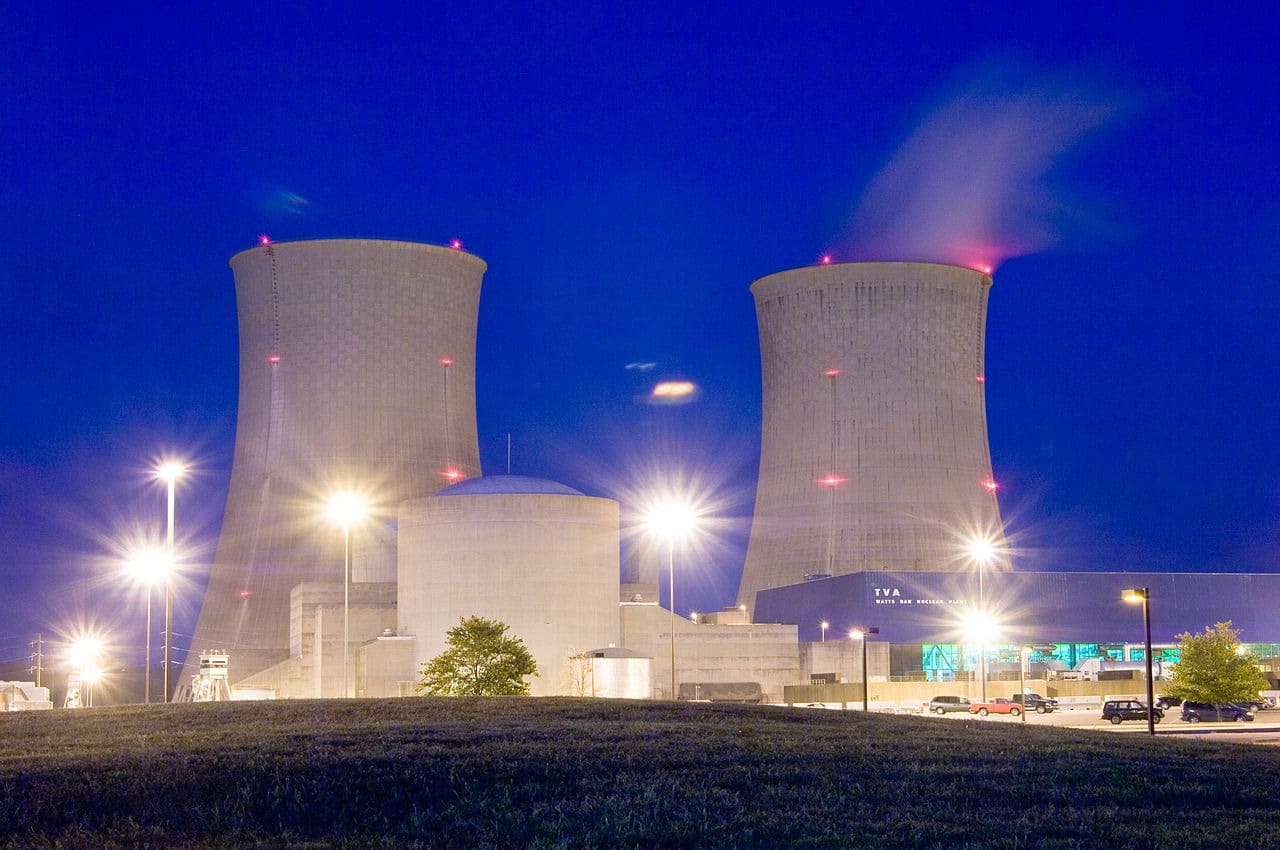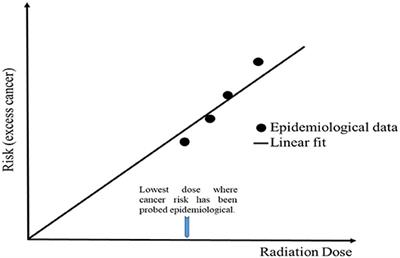Table of Contents
As our planet continues to grapple with an ever-increasing demand for energy, the quest for cleaner and more efficient sources has taken center stage. One such energy source, nuclear power, has been a point of heated debate since its inception. The pros and cons, costs and benefits, and potential applications of nuclear energy are heavily scrutinized, as experts and policy makers continue to search for sustainable solutions to meet the world’s energy needs. In this blog, we delve into the world of nuclear energy, exploring the risks involved, and whether or not it’s worth pursuing as a viable source of power for the future.

Nuclear Power: Addressing the Dangers and Risks
Nuclear power offers substantial benefits, such as producing large amounts of electricity without emitting greenhouse gases, but it also comes with potential dangers and risks that must be addressed. Public perceptions of nuclear energy, often influenced by nuclear accidents such as Chernobyl and Fukushima, tend to focus on these risks. Maintaining safety measures and addressing concerns about waste disposal, nuclear accidents, and radiation exposure is critical for the industry to thrive.
The U.S. Department of Energy is actively working with industry partners to design safer nuclear reactors and fuels to reduce the risks associated with nuclear power. One example is the development of small modular reactors (SMRs) and micro reactors, which are more flexible and can reduce construction timelines and expenses. Furthermore, the Department of Energy is continuously evaluating nuclear power plant sites and transportation infrastructure to ensure the safe transport and disposal of nuclear waste. Reacting effectively to the challenges posed by nuclear power will help bolster public support and allow for the further development and deployment of this cleaner energy source. [1][2]

Physics of Nuclear Power and Its Safety Record
The physics of nuclear power plants involves extracting energy from atomic nuclei through a process called nuclear fission. This process involves breaking apart the nucleus of an atom, such as uranium-235, causing it to release a significant amount of energy. To initiate this chain reaction, high-energy neutrons are used to bombard the uranium, resulting in a continuous energy production when operating. The safety of nuclear power plants focuses on preventing nuclear criticality and the release of radioactive materials when generating electricity.
Over six decades, there have been only three significant accidents at nuclear power plants, including the well-known incidents at Chernobyl and Fukushima. These accidents, while often sensationalized in the media, have led to safety improvements and contribute to the low risk of accidents in nuclear power plants. In fact, safety records indicate that nuclear power is a safe means of generating electricity, with its risk of accidents being low and consistently decreasing. Furthermore, radiological effects on people can be avoided with proper strategies and planning, making nuclear power a relatively safe and efficient method of producing energy. [3][4]

The History of Nuclear Disasters
The history of nuclear disasters is marked by two significant accidents which have had long-lasting consequences for the environment, public health, and global perceptions of nuclear power. These two major incidents were the Chernobyl disaster in 1986, and the Fukushima Daiichi disaster in 2011. Both disasters were caused by a combination of human error, design flaws, and natural disasters that led to the release of radioactive materials and the exposure of countless people to radiation.
The Chernobyl disaster in Ukraine, on April 26, 1986, remains the most severe nuclear accident in history. It resulted from a failed safety test, triggering explosions and a fire that released large amounts of radioactive materials into the atmosphere. Immediate deaths included two workers killed by the explosions, 28 emergency personnel and plant workers who died from acute radiation syndrome, and an estimated 5,000 thyroid cancer cases linked to radiation exposure. While the radiation health effects from this incident were relatively small, the socioeconomic and psychological impacts have been profound, largely due to misconceptions and fears about radiation exposure.
Fukushima Daiichi disaster, triggered by a massive earthquake and tsunami in Japan on March 11, 2011, marked the second worst nuclear incident after Chernobyl. Floodwaters from the tsunami destroyed backup generators meant to pump cooling water into the reactors, causing meltdowns in three reactors and subsequent hydrogen explosions. This disaster led to the release of radioactive materials but resulted in no direct fatalities. The Japanese government lifted evacuation orders for [5][6]

Weighing the Pros and Cons: Is Nuclear Energy Worth the Risk?
Weighing the pros and cons of nuclear energy is essential to determine if it is worth the risk. Some advantages of nuclear energy include its carbon-free electricity generation, relatively small land requirements, high energy outputs, and consistent production levels.
On the other hand, nuclear energy has several disadvantages like its reliance on limited, non-renewable uranium resources, high initial costs for plant construction, nuclear waste production, and safety concerns. The potential for catastrophic accidents, such as those in Chernobyl or Fukushima, can have long-lasting and devastating consequences on human health and the environment.
Taking into account both the advantages and disadvantages, the decision to utilize nuclear energy ultimately hinges on whether its benefits outweigh the risks involved. The assessment should consider factors such as the availability of alternative energy sources, environmental impact, cost-effectiveness, and long-term sustainability. As technology advances and efforts increase to transition to more sustainable energy options, the role of nuclear energy may need to be re-evaluated and adjusted accordingly in order to minimize risks while maximizing the benefits that it can provide. [7][8]

Nuclear Power Decontamination Efforts: Science vs Fear
Nuclear power decontamination efforts have significantly improved safety measures in recent years due to advancements in science and technology. While it is true that potential hazards exist, the risk of accidents in nuclear power plants is consistently declining. Nevertheless, public fear and anxiety surrounding nuclear energy continue to persist, often overshadowing the remarkable progress in safety and containment measures.
Decontamination efforts, such as radioactive fallout cleanup and building demolitions, have led to enormous progress in reducing radiation exposure to acceptable levels in previously evacuated areas. For instance, in Okuma, Japan, the government has cleared radiation levels and reclaimed habitable land after the 2011 Fukushima Daiichi nuclear disaster. Despite these achievements, public doubt and skepticism towards nuclear power safety persist. The fear of long-term exposure and its potential health consequences remains a topic of contention. However, it is essential to consider the balanced view of nuclear power and its associated risks, along with the tremendous strides in decontamination and safety protocols that the industry has achieved. [9][10]

International Views on Nuclear Power: Impact on Climate Change and National Security
International views on nuclear power vary, as its impact on both climate change and national security are taken into consideration by different nations. While some countries have opted out of nuclear power due to safety concerns and other issues, many others still see a significant role for nuclear energy in their energy transitions. Nuclear power can help combat climate change, as it is low-carbon and can be deployed on a large scale, providing clean, reliable, and affordable electricity. The United Nations Intergovernmental Panel on Climate Change (IPCC) has emphasized the importance of limiting global temperature rise by reducing greenhouse gas emissions, and nuclear energy has shown its potential in supporting these goals.
On the other hand, concerns about national security and the potential dangers posed by nuclear power plants have led some countries to reconsider their involvement in nuclear energy production. Nevertheless, the growing dependence on electricity and the need to provide a clean, sustainable energy source make nuclear power an essential factor in addressing climate change across the globe. As such, more governments may need to address safety concerns and potentially invest in new technologies to further develop nuclear power as a crucial component of their clean energy systems. [11][12]

Low-Dose Radiation Exposure: Analyzing Long-Term Health Risks
Low-dose radiation exposure, such as those experienced by radiation workers and the general public, has raised concerns regarding its long-term health risks. Usually, radiation with a cumulative dose up to 100 mSv is referred to as low-dose radiation, although sometimes relevant doses may be higher. Contrary to public perception, nuclear power accidents have resulted in very few fatalities, and the use of nuclear energy does not expose members of the public to significant radiation levels. In fact, natural sources account for most of the radiation that people receive each year.
Current radiation protection standards assume that any dose of radiation, no matter how small, involves a risk to human health. However, some studies suggest that low-dose radiation exposure may have beneficial (hormetic) effects. Numerous in vitro and animal model experiments have demonstrated that several mechanisms initiated by low-dose radiation may result in positive health outcomes. While the linear no-threshold (LNT) model of radiation damage has not been proven to be true or false, it is important to recognize that the high price of LNT-inspired regulation, in terms of both economic and human costs, may warrant a reassessment of current regulatory practices to ensure an appropriate balance between public safety and the benefits of nuclear energy. [13][14]

Sievert and Millisievert: Understanding Radiation Dose
The Sievert (Sv) is a unit used to measure the biological effect of ionizing radiation, such as x-rays and gamma rays, on the human body. It represents the equivalent dose, which takes into account the different types of radiation and their varying levels of biological harm. It is essential to understand radiation doses when evaluating the risks associated with exposure to ionizing radiation. Doses in medical imaging and environmental radiation exposure are typically expressed in millisieverts (mSv), which are one-thousandth of a Sievert.
As a reference, the average annual background radiation dose, primarily from radon gas in the home, is around 3 mSv. Studies on atomic bomb survivors and radiation industry workers have shown that radiation exposure increases the risk of cancer, and this risk increases as the dose increases. Conversely, cancer risk from radiation exposure declines as the dose falls: the lower the dose, the lower the risk. For example, an individual exposed to a one-time uniform whole-body dose of 100 millisieverts (10 rem) would have a low cancer risk, with about 99 percent not developing cancer as a result of this exposure. However, in a large population, even low individual risks could result in a significant number of additional cancers over time. [15][16]
Comparing Nuclear Energy to Fossil Fuels: Which has a Greater Environmental Impact?
Nuclear energy and fossil fuels are two primary sources of power generation, yet they possess significantly different environmental impacts. To determine which energy source is more environmentally friendly, it is important to consider factors such as greenhouse gas emissions, waste disposal, resource availability, and land use.
Compared to fossil fuels, nuclear power is undoubtedly the low-carbon option, as it releases minimal greenhouse gas emissions during electricity generation. In fact, nuclear power has prevented approximately 55 gigatonnes of CO2 emissions over the past 50 years, nearly equal to two years of global energy-related CO2 emissions. On the other hand, fossil fuel combustion generates substantial amounts of carbon dioxide, contributing to climate change and global warming.
In terms of waste, nuclear energy produces a relatively small volume of waste in comparison to fossil fuels. The entire nuclear waste produced by the US nuclear energy industry over the past 60 years could fit in a football field at a depth of less than 10 yards. Furthermore, the land footprint of nuclear power plants is notably smaller than that of solar or wind power installations. A 1,000-megawatt nuclear facility requires just over one square mile of land, whereas solar photovoltaic plants require 75 times more space for the same electricity output. In conclusion, nuclear energy has a much lower environmental impact than fossil fuels, making it a more sustainable choice for future energy production. [17][18]
7. Comparing Nuclear Energy to Fossil Fuels: Which has a Greater Environmental Impact?
Nuclear energy and fossil fuels are two forms of energy that both have environmental impacts. While nuclear energy is considered a cleaner source of power than fossil fuels, both have advantages and disadvantages that must be considered.
When it comes to carbon emissions, nuclear power is the clear winner. Nuclear energy produces far less carbon emissions compared to fossil fuels. A single nuclear reactor can produce the same amount of energy as hundreds of wind turbines or thousands of solar panels. This means that if nuclear power were to replace fossil fuels, carbon emissions would significantly decrease, which would benefit the environment.
However, nuclear energy has other environmental concerns that must be addressed. One major issue is nuclear waste, which is highly toxic and takes thousands of years to decay. Proper disposal of this waste is essential to prevent contamination of the environment. Additionally, nuclear accidents, such as the Fukushima disaster in Japan, can have devastating consequences on the environment and human health.
On the other hand, fossil fuels have numerous environmental impacts. The extraction, transportation and burning of fossil fuels all produce greenhouse gas emissions, which contribute to climate change. Fossil fuel extraction can also harm wildlife and their habitats. Fracking for natural gas, for example, can contaminate groundwater and cause earthquakes. Burning fossil fuels also releases pollutants such as sulfur dioxide, nitrogen oxides, and fine particulate matter, which all contribute to respiratory and other health problems.
The Role of Nuclear Power in Achieving the Paris Climate Agreement Goals:
The Paris Climate Agreement aims to limit global warming to well below 2 degrees Celsius above pre-industrial levels, with a goal of 1.5 degrees Celsius. Achieving this goal will require a significant decrease in greenhouse gas emissions, which makes nuclear power a potential solution.
Nuclear energy is considered a low-carbon energy source and is capable of producing a significant amount of electricity without emitting greenhouse gases. In fact, nuclear energy currently provides about 10% of the world’s electricity. Nuclear power also has the advantage of being a stable and reliable source of electricity, providing base-load power that can operate around the clock.
However, nuclear power is not without its challenges. The construction and maintenance of nuclear power plants can be expensive, and the potential for accidents and the storage of radioactive waste pose significant safety concerns. Additionally, nuclear energy is not as widely used as other low-carbon energy sources, such as wind and solar, due in part to public perception and political factors.
Despite these challenges, nuclear energy is still seen as a potential solution to help achieve the goals of the Paris Climate Agreement. Some countries, such as France and Sweden, have successfully implemented nuclear power as part of their energy mix and have significantly reduced their greenhouse gas emissions as a result. Moving forward, investment in research and development of advanced nuclear technologies may help to address the challenges associated with nuclear power and increase its use as a low-carbon energy source.
The Future of Baseload Energy: Can Nuclear Power Prevail?
As the demand for energy continues to rise, the future of baseload energy is becoming an increasingly important topic of discussion. With growing concerns about climate change and the need for clean energy, many countries are turning to renewable options like wind and solar power. However, these sources are intermittent, making it difficult to rely on them for baseload energy.
This is where nuclear power comes in. Nuclear power plants are capable of producing large amounts of electricity on a consistent basis, making them an attractive option for countries looking for reliable baseload energy. In addition, unlike fossil fuels, nuclear power does not produce greenhouse gas emissions, making it a cleaner energy source.
However, nuclear power is not without its drawbacks. There are concerns about the safety of nuclear power plants, especially in the wake of incidents like the Fukushima disaster. In addition, nuclear power plants produce radioactive waste that remains dangerous for thousands of years, creating a potential hazard for future generations.
Despite these concerns, nuclear power is still seen by many as an important part of the energy mix. Some countries, like France, have already embraced nuclear power, with nuclear energy accounting for a significant portion of their electricity generation. Other countries, like the US and China, have plans to expand their use of nuclear power in the coming years.
Ultimately, the future of baseload energy may come down to a combination of renewable sources and nuclear power. While renewable energy is becoming more affordable and accessible, it may not be able to meet the world’s growing energy needs on
Government Attitudes and Investment in Nuclear Energy:
A Global Overview Government attitudes towards nuclear energy have varied widely across the globe. Some countries have embraced nuclear power as a viable and necessary source of energy, while others have been more skeptical or even opposed to its use.
One factor influencing government attitudes towards nuclear energy is the perceived risk of nuclear accidents and the potential for radioactive contamination. Events such as the Chernobyl disaster in 1986 and the Fukushima Daiichi nuclear disaster in 2011 have underscored the potential dangers of nuclear power, leading some countries to phase it out or seek alternative sources of energy.
Despite these concerns, many countries continue to invest in nuclear energy, often citing its reliability and low carbon footprint as key advantages. Countries such as the United States, Russia, China, and France have all made significant investments in nuclear power, with the aim of reducing dependence on fossil fuels and addressing climate change.
At the same time, investment in nuclear energy has faced many challenges, including high costs, technical difficulties, and public opposition. As a result, some countries have shifted their focus towards renewable energy sources, such as solar and wind power, which are often more affordable and less controversial.
Overall, the global picture of government attitudes towards nuclear energy remains complex and varied. While some countries continue to rely on it heavily, others are looking towards alternative sources of energy as a means of meeting their energy needs and addressing environmental concerns.